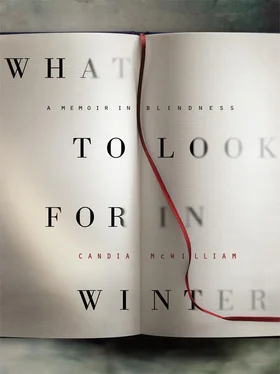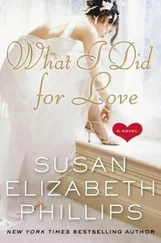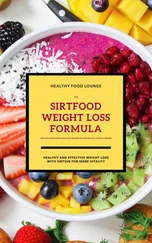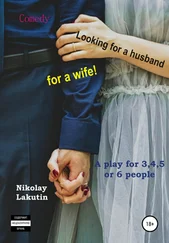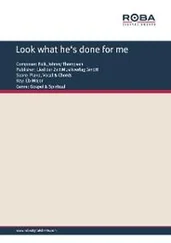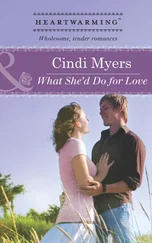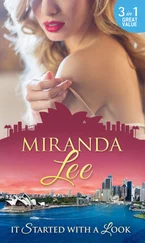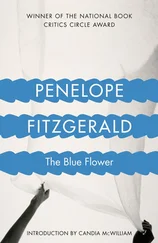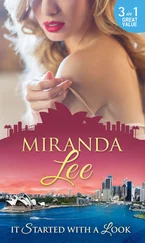That’s carry-out for you on a scale beyond even lobster. The painting has since been returned. The late Duke was once our Member of Parliament and I remember him canvassing in Thistle Street, a tall curly-headed long man, before he broke his back out hunting. His father, the old Duke, had a silver wine cooler the size of a cow trough into which I remember being put for fun as a small child. Like being in a huge deep ladle of precious reflective metal, it fitted me fine. All made to hold drink.
My lips had never touched liquor then.
I was an only child, but even then somehow stood aside from properly inhabiting a self, even though at the beginning it was a fairly chunky self to inhabit. I played with dolls, glass animals, and small unmatching china tea services that my mother collected in junk shops. Wherever she went, I was. I followed her stuck like a limpet to its home-scar. I loved the scent of her forearms and the smell of her hands that combined acetone, coffee, Atrixo hand cream and cooked garlic.
In our crescent lived many mothers of families to whom Mummy became close. Constance Kuenssberg was a doctor and the wife of Ekke, our doctor, who came out day and night for us.
Ekke’s father had written to him when Ekke was a boy at Salem in Germany, the school set up by Kurt Hahn who later founded Gordonstoun. It was 1935 and the Nuremberg Laws had just been passed. In Ekke’s father’s letter were the instructions to walk out of Germany into neutral Switzerland, down into France, and thence to Great Britain. Ekke did this. He was interned as an enemy alien on the Isle of Man, which some have described as being a kind of university then, a virtuous Babel. On his arrival in Edinburgh, Ekke trained to become a general practitioner and married Constance, who was part of the Edinburgh establishment, being daughter of the Rector of Edinburgh Academy. This extraordinary couple did much to set up the National Health Service in Scotland. Ekke’s son is now still my stepmother’s doctor.
For a more expansively raised generation I should say that you had, at that time (if you had shoes at all), indoor shoes and outdoor shoes, the line between each being the front door of any dwelling place. The purpose of these designations was cleanliness. It did not do to bring the outdoors in. You might spoil someone’s good housekeeping. It was a matter of everything in its proper place.
The cold: each day was a fight to keep the cold outside where it belonged and not let it into the house, though houses were freezing inside too; there was an unsleeping vigilance against cold as it came in from the sea and down from the hills and off from the mountains and into our bones. If the air was not misty with human breath and surreptitious attempts at thaw, it was misty with the haar, the mist off the sea, of which some Edinburgh residents were in my childhood very proud as it was yet another way of keeping yourself to yourself.
It was not unusual to see people ski the winter streets. Mothers would pull children on toboggans to fetch the messages, which is Edinburgh for ‘do the shopping’. Old ladies walked as I do now that I’m blind in the snowless streets of London, side-shuffling along the pavement while nervous hands feel for the next railing. I cracked today into a column of sixties brick, the corner of what used to be a rather ritzy rehabilitation clinic. The bruise is coming up nicely. Today’s blepharospasm doctor wryly remarked, ‘The clinic got out six months ago, or you might have been able to sue. It belongs to a property developer now and they’re a bit more hard-headed.’
My mother’s and my favourite junk shop was Mrs Virtue’s, in a basement on a corner with her name up in subtly shaded sign-writing emphasised in gold. The steps down to Mrs V’s had iron handrails curled to right and left. She herself wore a hairnet, a navy angora hat, a musquash coat, a pink-flowered pinny, many cardigans topped by a maroon one, a Clydella vest, fingerless gloves, varicose veins, stockings and socks, and what were called indoor shoes.
Mrs Virtue’s shop was a tunnel of mattresses twenty deep on either side, damp with cats’ piss. It was hard to imagine Mrs Virtue outside her musty nest. It is likely that she and her cats had a shared diet, though she smoked more than they did. I can’t think why I never stole anything from Mrs Virtue’s shop. Can it have been original virtue in me? The place was so chaotic and I so young that I understood the set-up as how things were meant to be and would not have dared spoil the careful arrangements Mrs Virtue appeared to have made. She had a face like chiffon for wrinkling and intermittent sets of teeth. Her eyes were dark and missed little.
Mummy spent hours talking to Mrs Virtue. They had far more than cats in common. I didn’t know then that these long conversations with people outside her marriage were a symptom of her loneliness as well as of her curiosity and friendliness. I am certain she was not signalling this loneliness to anyone intentionally, leave alone to me. She wanted to be the best of mothers.
It is not easy to say this out loud and before I went blind I would not have had to, but this greedy obsessive recall of trivial (and, it’s not lost on me, mainly visual) detail has clamped to me even closer as a habit since I lost my capacity to see. I was made of what I saw. I saw in panorama and in focus. I saw things at and even over the edge. I wasn’t half so good at hearing.
I’m scared I’ve become like an inventory for the sale of an old dead person’s house, what Scots call a displenishing; here I am, picking up lost bits and pieces of my scattered life to try to make something whole by putting it all together, my own flotsam and jetsam.
I plugged up my ears against the parental fighting. I think I knew that my parents, as a pair, were growing terribly demarcated from within, she the indoor and he the outdoor shoes. There was some scuffing. She threw and he hit. She slapped. He didn’t throw.
Both were sociable and attractive to the opposite sex. They took me with them to dinner parties and I either sat up with them or was put to bed in a guest room or the hosts’ bed. I remember falling asleep in a nightie from Mrs Virtue’s that my mother had laundered and starched. I had a tube of Smarties, too precious to open, in one hand. And I had done my teeth. The couple my parents were dining with encouraged me glamorously to call them by their Christian names, Gerald and Denise. He was what is called in Scotland a sheriff and she was French. From the age of three I had attended the Institut Français. It wasn’t a particularly fancy thing to do at that time in Edinburgh; it may have its roots in the Auld Alliance, that tie between Scotland and France against the old enemy, England.
When my parents woke me up, after dinner with the Sheriff had run its course, the bed was stippled all over the clean sheets by the gay fugue of Smarties.
It seems a pity to interpose ‘real time’ yet again, but it occurs to me that my use for Smarties as a child was only chromatic. I sorted them into colours, hoarded, hid and lost them or gave them away, mainly to my father who, being skin and bone, loved chocolate. From the first I knew that different characteristics inhered in each colour and that colours related to numbers and to letters of the alphabet.
I don’t like chocolate but I love to look at its outer casing. I am attached to those maps that come in chocolate boxes, with fanciful names for each mouthful. I still can’t face chocolate, unless, and this is awful, it is white and therefore not chocolate at all.
In fact, it’s probably my version of mother’s ruin nowadays and certainly this breast-fed baby’s only approximate mother substitute.
There was a sweet named Treets. Treets were like fatter, and merely brown, Smarties, and they had a slogan: ‘Melts in the mouth, not in the hand’.
Читать дальше
